A Year in the Life of a Horticulturalist
Zöe , one of three horticulturalists, has spent the past year working in the stunning grounds, specifically looking after the Walled Garden and Coach House Garden. Read to discover how working at Markshall Estate has benefitted Zöe’s well-being and a brief guide to the Walled Garden throughout the seasons. Over to Zöe …
“Grow beauty in the garden of your mind” – unknown.
The 8th of May was Garden Day. It aimed to highlight the positive benefits of gardening on your
wellbeing. I have been lucky enough to have worked at Markshall Estate for the past year and to
have been one of a team of three wonderful horticulturalists who have been guardians of the
Walled Garden and Coach House Garden. I have found gardening here so beneficial for my
wellbeing, both physically and mentally. I know a number of visitors have mentioned to me that
they feel the benefits from being in such a beautiful space too, on so many different levels.
From the 16th of May, we also celebrate National Smile Month and I can safely say that working
on this beautiful estate has definitely made me smile on a daily basis.
There is year round interest, plenty of surprises along the way and an abundance of wildlife to
behold.
For this month’s blog I am going to focus on the Walled Garden as this is where I have spent most
of my time and hope that my journey through the seasons in this wonderful space will make you
smile and if you don’t do any gardening at the moment to feel encouraged to pick up a trowel and
get planting.

Historically the Walled Garden would have been the place where fruit, vegetables and flowers were
grown for the Mansion on the Estate. Today, it is a wonderful tribute to the old, whilst being a
modern feast for the senses and a beautiful space for all to enjoy.

journey through life. The first section is birth and this is represented by an earth sculpture in the
form of a giant’s footprint. From here you are guided along a path between rows of Hornbeam
hedging (Carpinus betulus) and through into the rest of the internal gardens, starting with the wavy
hedge garden. From here, you enter the linear garden and then onto the wavy walled garden. At the
end, there is a small maze and another earth sculpture representative of death and this is a hollowed
out mound with upright slate pieces throughout it’s centre. The journey and separate phases
throughout life and each garden, provide different sensory experiences. From the meandering,
scented Choisya hedging in the wavy hedge garden; to the calm, simple, relaxing space of the
linear garden and; the colourful and playful wavy walled garden.

In the late winter months, the walled garden has a lot of heady scents in the forms of the
Chimonanthus Praecox ‘Winter Sweet’, the Daphne odora ‘ “Winter Daphne” and the Sarcococca
confusa “Sweet Box”. All with small, heavily scented flowers which also provide some winter
colour.
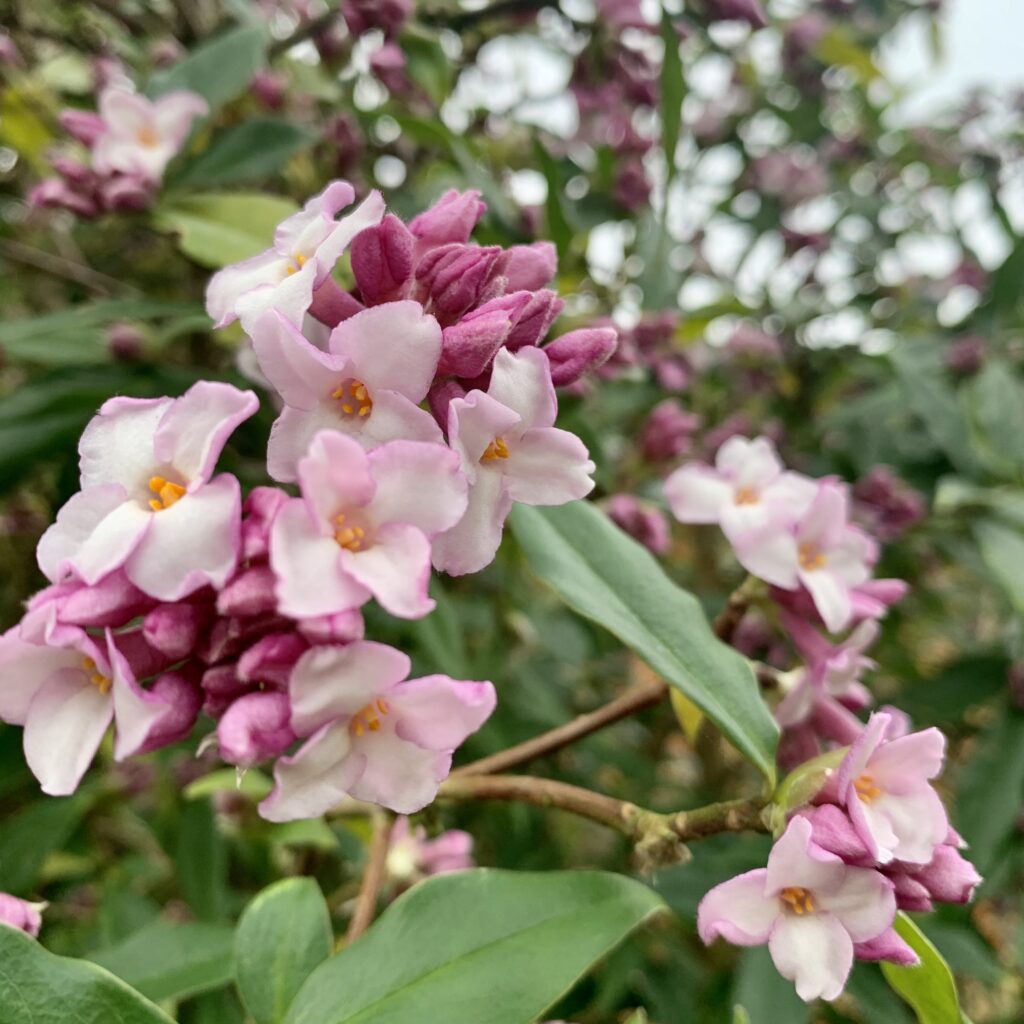
As Spring kicks in, the sound of bird song and industrious bees fill the air. Indeed it is a cacophony
of sound. The cuckoos and woodpeckers can be heard amongst the trees, the ducks and geese can
be heard skimming across the lake and doing handbrake turns to fend each other off and the red
kite soar gracefully above letting out whistling cries. Families with children are often doing one of
our themed trails and running around enjoying the freedom and fresh air. Now and then, you hear
the gentle plop of carp leaping from the lake and then the gentle hum of pollinators as you walk by.
The bees particularly love the Skimmia x confusa ‘Kew Green’ and the Helleborus corsicus syn.
argutifolius at this time of year. The Amalanchier lamarckii ‘Robin Hill’ in the linear section of the
garden becomes a canopy of trees above concrete and Box balls (Buxus sempervirens) and gives
an air of being in a small village in France with the locals playing Petanque beneath the trees. You
will often find one of the peacocks perching on the bench here in the shade. As the warmth begins
to hit the beds, the Irises spp. and Lupinus ‘The Governor’ start to form their long flower heads.
The Ceanothus along the long border provide deep blue interludes that you can’t help but find your
eye drawn to.

The summer months is when the garden really comes to life in a sea of floral colour and a
distraction of fluttering butterflies (I have seen eight different species in the Walled Garden alone).
The Lavandula angustifolia and Santolina rosmarinifolia ‘Primrose Gem’ provide purple and
yellow displays and a bouquet of scent. The Salvia spp. provide a scented and tactile element to the
garden. The giant red poppies (Papaver orientale ‘Beauty of Livermere’) give a striking focal point
in the wavy walled garden; which itself is popular with children and adults alike who love to
follow the trail of its walls.
Our more tropical plants like the Canna Indica ‘Purpurea’ (native to South America) and the
Echium Pininana (native to the Canary Islands) are thriving at this time of year. The latter is quite
striking with its leafy skirt and tall spire-like flower heads. The Buddleja globosa (native to South
America) is covered in buzzing bees making the most of its beautiful blooms.
Later in the summer, the flowers of the Echinacea purpurea, Rudbeckia, Crocosmia ‘Lucifer’ and
Perovskia atriplicifolia provide vibrant interest. The Sedums (now known as Hylotelephiums)
bring a bouncy level of colour to the front of the border and the last of the delicious nectar for the
pollinators.
As late Summer gives way to Autumn, we become aware of the changing colours of the leaves.
The Quercus dentata with their giant oak leaves provide a satisfying crunch under foot. The
Achillea ‘Terracotta’ is just still in flower and the Agapanthus spp. are still showing their chandelier
like flower heads.
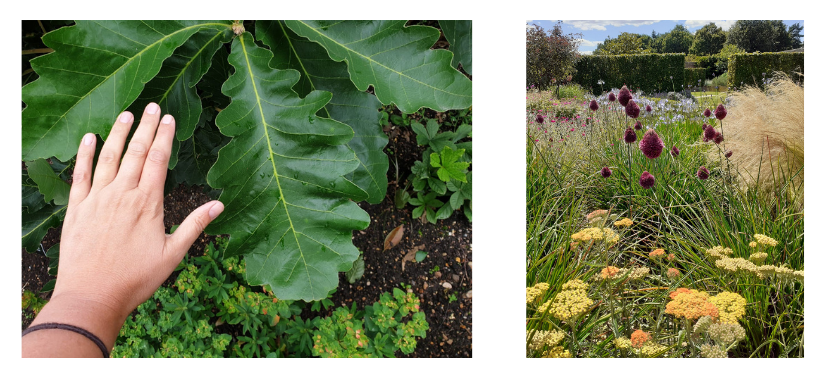
The grasses really come in to their own at this time of year and we have a number of different
varieties here including the Stipa gigantea, Calamgrostis x acutiflora ‘Karl Foerster’ and
Anemanthele lessoniana among others which are great tactile plants for those who benefit from this
sensory experience.
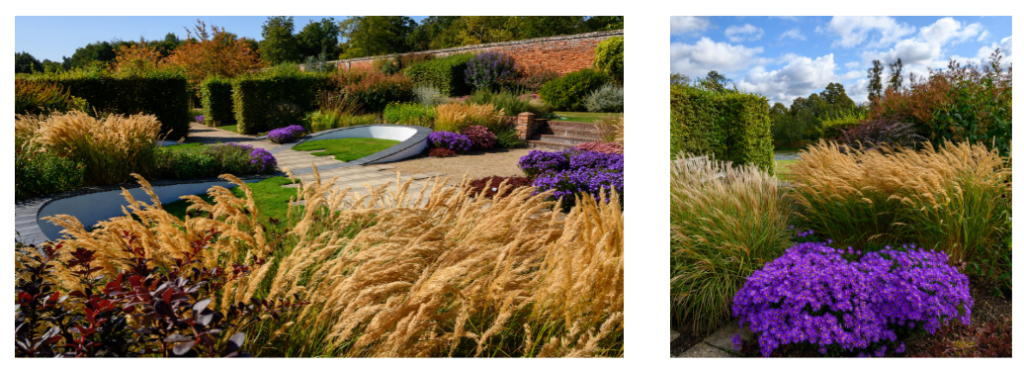
As the Autumn turns into Winter and we close our doors, it’s possible to spot moth larvae inside
delicate wooden cocoons on woody plants such as the Salix alba subsp. Vitellina and to see the
remnants of birds nests in the hornbeam hedging as it shreds its leaves. This is one of the busiest
times of year for us horticulturalists as we start cutting back many of the plants after flowering,
tidying and mulching the beds, aerating the grass paths and putting in bulbs and other plants ready
for the following year.

It’s then that we patiently await the magic that occurs when Spring comes around once more…
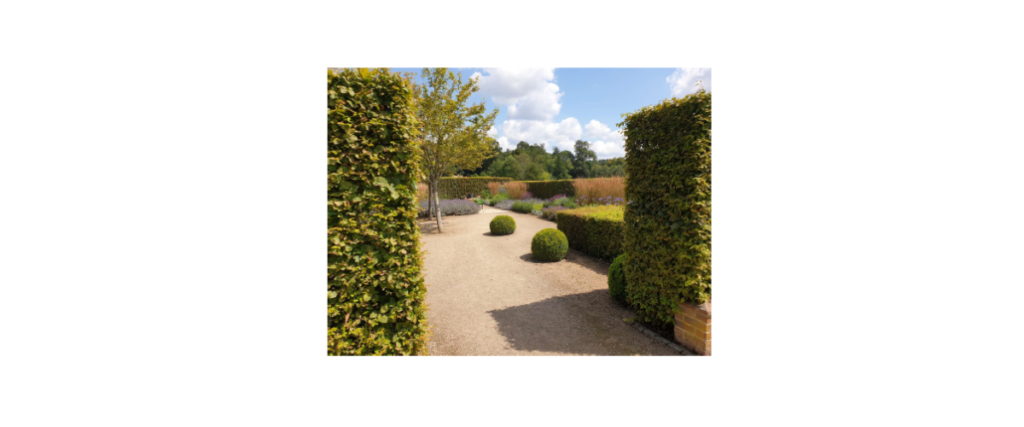
“Nature does not hurry, yet all is accomplished” – Lao Tzu.
This is my last blog for Markshall Estate as my year’s contract as a Horticulturalist here comes to
an end. I would like to thank everyone on the team for your warm welcome, help and support over
the past year. I would particularly like to thank Senior Horticulturalist Sara whose expertise,
leadership, guidance and friendship have enabled me to now progress further in my career with
greater knowledge and confidence. Thank you also to the marketing team who have enabled me to
continue being creative by using my photos and blogs on the social media pages. Thank you also
extends to all our loyal visitors who come and appreciate the beautiful space that is Markshall Estate
and with whom I have hugely enjoyed talking to about the beautiful Walled Garden and
Arboretum. I hope that it continues to bring you as much joy as it has done me over the past year.
I certainly will be visiting again when I can.
Zöe (Horticulturalist)
More from the blog
See more
-
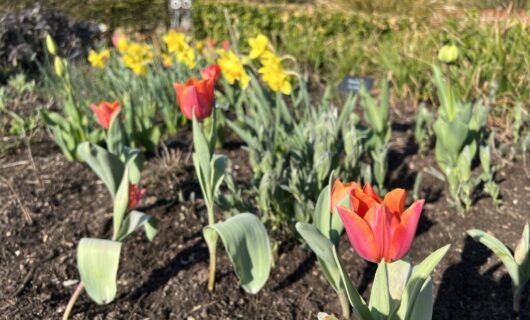
Updates from the Walled Garden in Spring
What can be discovered in the Walled Garden at Markshall this Spring? Our Walled Garden is home to a stunning […]
-

Commemorating the 80th Anniversary of Operation Varsity
What was Operation Varsity? Operation Varsity was the codename for the largest single airborne operation conducted on a single day […]
-
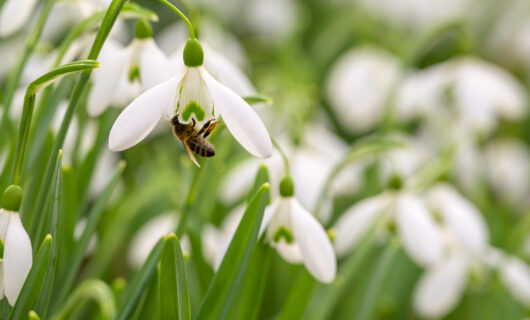
Your guide to enjoying the snowdrop display at Markshall
February is the best time to visit Markshall’s spectacular snowdrop display. To ensure that you make the most of your […]